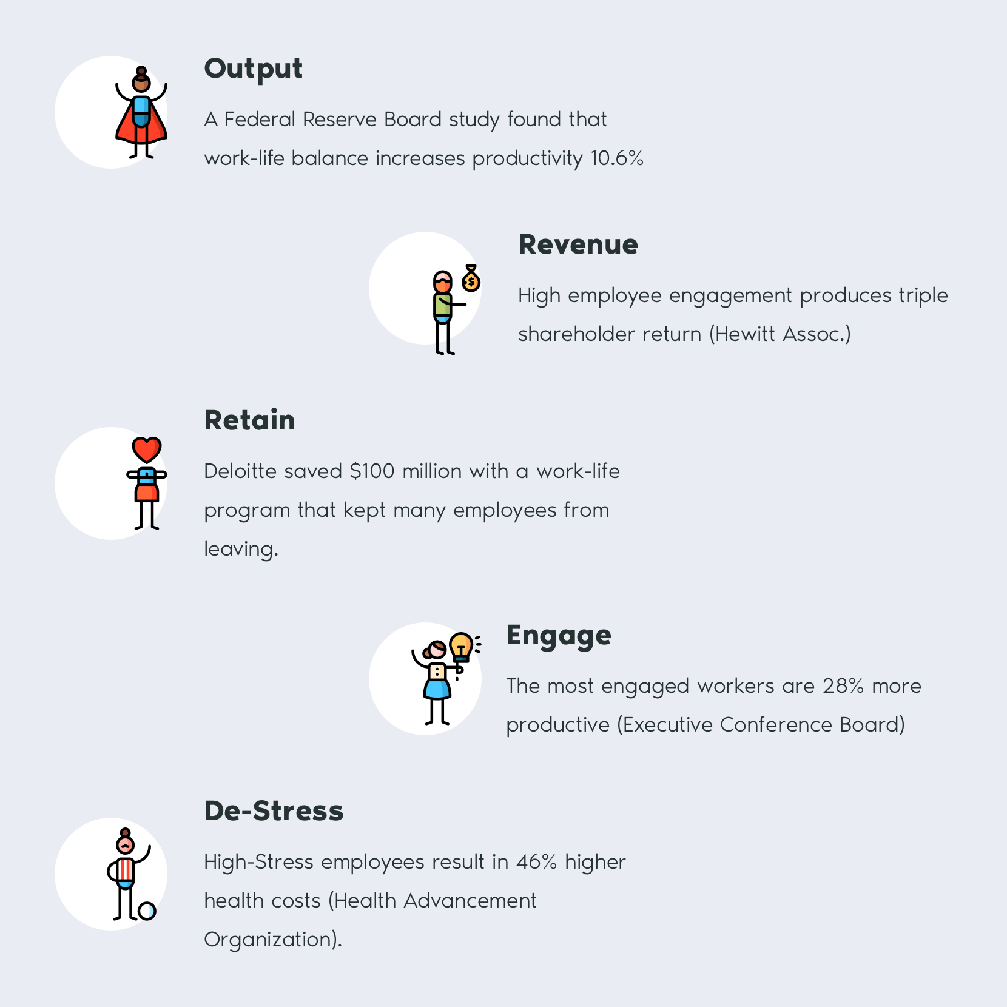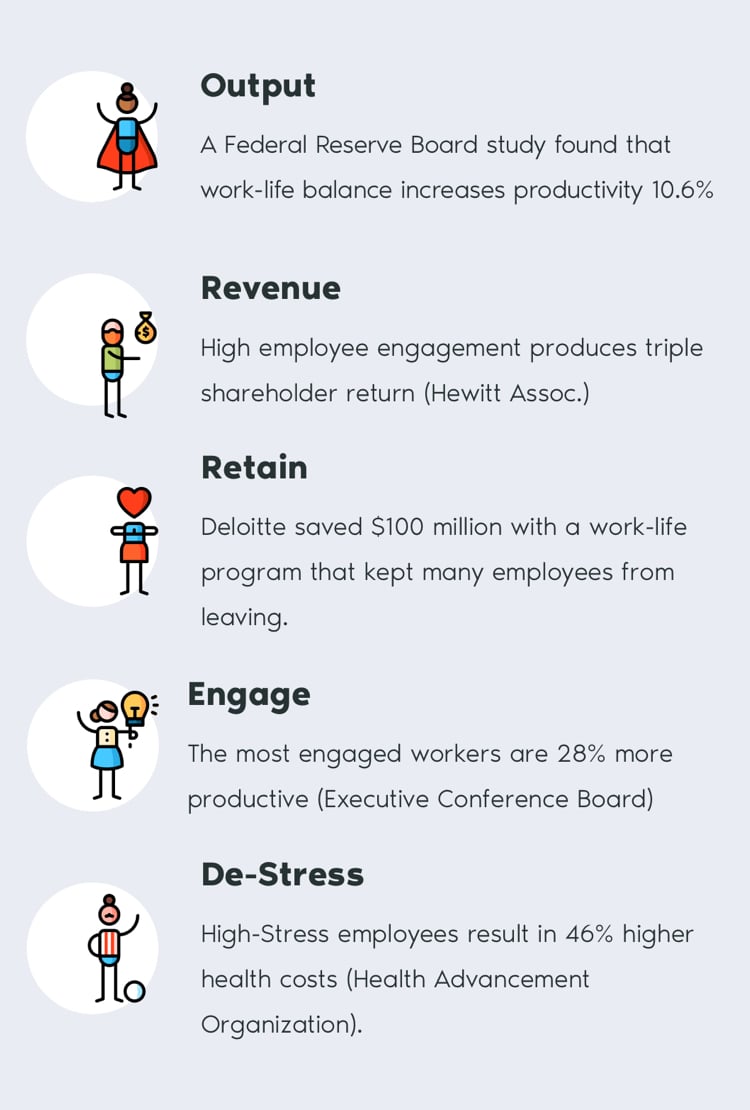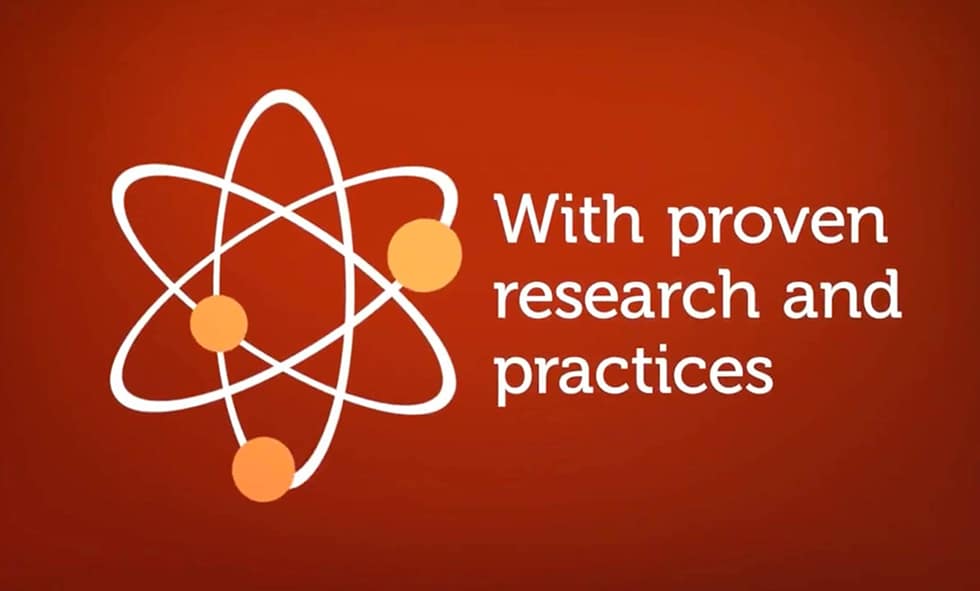Our WLB Approach: Smarter Work
14 Ways to Boost Work-Life Balance
We build sustainable work-life balance by giving employees the tools for smarter and more proactive self-management. They get strategies to manage demands, reactions, minds, and bottlenecks, and prevent shrinking attention spans.
The science tells us that attention is the chief productivity tool, chief life tool, and chief happiness tool. The more of it we have, the less stress, the more we are engaged in what we’re doing, like what we’re doing, and get it done faster.
Yet devices, distractions, and unmanaged demands are shredding attention today and, as a result, driving work-life imbalance and conflict. Without good time management, information management, interruption management, and stress management, strain and distraction drive stress and overwhelm. It leads to tasks having to be done over again, reduced productivity, more effort to get the same amount of work done, and hours of catching up on work at home or on the weekend.
Our work-life balance program gives employees proactive self-management skills that let them make critical adjustments to how they do their tasks and how they organize life outside the job to reduce stress and maximize attention and engagement. Here are some of the ways the program boosts work-life balance and job satisfaction:
14 Ways to Increase Work-Life Balance
1. Do a Work-Life Balance Survey.
The right work-life balance survey can surface issues driving work-life conflict and identify the areas that need to be improved. Our How to Do a Work-Life Balance Survey Ebook serves as a road map to the hot buttons and pressure points that are undermining work-life balance. It serves as a starting point for a second survey to be done after the work-life program to get metrics on the success of the program.
2. Manage demands, pressure, and pace.
Stress blows up attention and undermines intellect, leading to mistakes, conflict with others, and crisis mentality, not to mention absenteeism, medical bills, and loss of top talent. Turn off the false danger signal of stress and the stress stops in four minutes.
3. Set boundaries on an unbounded world.
Research at Harvard and elsewhere shows that boundaries are a success tool. Reining in information overload and mechanical momentum help restore order to the workload and improve life outside the job.
4. Increase time management skills.
Everything is urgent when we don’t stop to think about what is urgent and what isn’t. Separating the urgent from the non-urgent and prioritizing tasks is key to unfrazzled pulse rates and effective workflow.
5. Improve time estimation and deadline management.
Employees can avoid missed deadlines and the stress that comes with them when they know how long each of their tasks takes and make sure their bandwidth can manage it.
6. Control email and information overload.
Every email results in six emails, three going and three coming back, since no one knows when the conversation is over. Employees can get control over email overload with information overload strategies vetted by the science.
7. Cut down on interruptions.
Lack of impulse control and crisis mentality drive excess interruptions. Interruptions blow up working memory, triple the risk of errors, and make everything you do seem harder than it is. When employees cut interruptions, productivity and job satisfaction increase.
8. Manage the self-infliction of multitasking.
Multitasking is a myth. Employees can’t do two thinking tasks at the same time. When they get control over this habit, they build attention and reduce mistakes and strain for brain neurons not built for doing two cognitive tasks at once.
9. Increase self-regulation and impulse control.
The more you check email, the more you have to check it. Interruptions and stress erode impulse control and discipline to stay on task. Employees can get willpower back when they build up their self-regulation and attention resources.
10. Refuel and recharge brains and bodies.
Humans are energy machines. After burning up energetic resources over the course of the day, we have to recharge like our smartphones. Employees get strategies on how to refuel during the day, after work, and in their leisure time.
11. Get the home front and family organized.
Employees can carve out more time for kids, partners, and schnauzers, when they have plans to manage chores, childcare, and quality time with each other.
12. Get more sleep.
One of the best ways to improve attention is to get more sleep. Through the latest science we learn the best and worst strategies for getting sufficient shuteye to bring full attention to the tasks at hand.
13. Put life on the calendar.
We have time for life, say researchers. It’s just not organized. We help employees identify the open slots and pursuits to indulge in. They also learn the difference between work and life skills to put the most gratifying life on the calendar.
14. Measure work-life balance improvements.
After the program employees can do a sustainment follow-up program and a survey to quantify the benefits of the program.


.png)





















.jpg)

.jpg)




